Lei Feng network (search "Lei Feng network" public number concerned) by: Author of this article Chen Weixian, snow orange gold service operations manager.
Whether it is a tool app, a shopping app, a community app, an audio app, or a game app, there is an important data indicator - user retention. Because the higher the user retention rate of the App, the longer it takes the user to use the product, the higher the cash flow and capital valuation they can bring to the product.
Content retention, function retention, friend retention, material incentives, emotional retention, personal brand recommendation, offline activities, etc. are just common operating methods to improve user retention rates. In order to conduct user operations more effectively and scientifically, What operations need to do is analyze the retention rate data of the user before the execution of the operation method, and evaluate the effect of the retention rate increase after the execution of the operation method.
1 what is the user retention rate
In the Internet industry, when a user starts using an application for a certain period of time, after a certain period of time, the user who still uses the application is considered to be a retained user of the application. The percentage of retained users that account for the new user at that time is For retention rate.
For example, in July, there were 500 new users for a travel app, 250 of them had started applications in August, 200 had applications in September, and 150 had applications in October, indicating July. This new wave of users has a retention rate of 50% after one month, a retention rate of 40% after two months, and a retention rate of 30% after three months.
Retained users and retention rates reflect the quality of the application and the ability to retain the user. If a product can not only meet the user's core needs, but also can be better, faster, and more convenient to meet the customer's core needs, then this product's user retention rate is basically not too bad.
2 commonly used data analysis tools
At present, there are many professional data organizations in the market to provide data statistics services, and there are about 3 or 4 mobile application statistical platforms. The most popular abroad is Flurry, which is very comprehensive in function; the other is that Google Analytics is also launched. Mobile version, but it can not be used normally in China. In the domestic statistical analysis platform, the famous Friend League, TalkingData, and GrowingIO, which can realize data statistical analysis without burying points, are currently well-known.
These tools all have very powerful data analysis capabilities. For example, you can use UFIDA with a large number of users. In addition to user retention analysis, you can also add new users, startup status, version distribution, user composition, channel distribution, and operations. Business conditions, management and other indicators can be clearly counted.
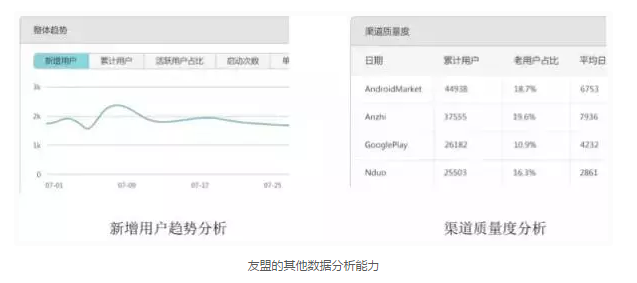
3 user retention rate chart
When the product is embedded in the SDK of the data statistical analysis tool, the user retention rate report is automatically generated in the background of the data analysis tool.

The above figure is the new user retention report provided by the U.S. statistics for a certain product during the period from July 4 to July 10. Tools such as GrowingIO provide retention curves on the basis of data reports in order to make operations easier to grasp the retention rate of users.
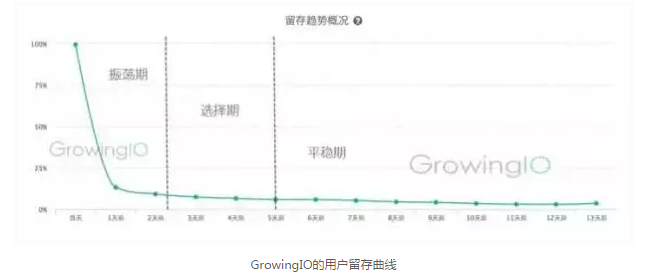
This is a common retention curve. We have divided it into three parts: the first part is the oscillation period, the second part is the selection period, and the third part is the stationary period. Among them, the optimization period of the oscillation period is the largest, and the problem of the loss of users caused by the oscillation period (guide page/core function optimization) can be resolved, which can effectively improve the user retention rate in the other two periods.
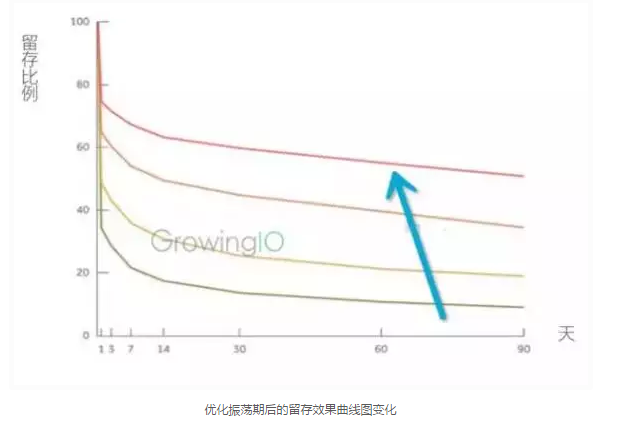
4 user retention analysis process
The first step: grouping
The first step in user retention analysis is to group users according to different (time/channel/behavior, etc.) dimensions. For example, when we conduct daily data analysis on the retention rate of users, we usually group by a single natural day, and then make a report on the performance of the new users obtained in any time period on the retention rate.
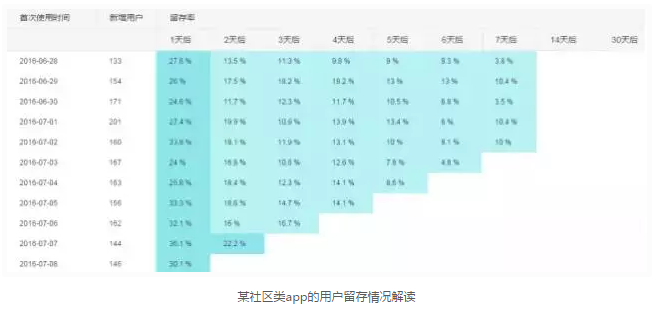
The figure above shows the grouping of a user's retention status by a community class APP according to the user's acquisition date. From the figure, you can see the user’s retention performance on a specific day. For example, on June 28th, the user retention rate was 27.8% after one day, 13.5% after two days, and 11.3% after three days.
If you want to dig deeper and find out what went wrong, it will lead to a low retention rate for this community-based app on the next day. This is not enough. We also need to further analyze user behavior analysis.
Step 2: Compare
The operation wants to find the optimal solution and verify the effectiveness of the operation strategy by analyzing the data of the user retention rate. The core analysis method is to compare the grouping based on the user behavior, because the absolute value is meaningless in most cases, only through the Comparing and analyzing data between different dimensions can help operations find the reasons for data changes.
For example, for the Baidu Post Bar client who wants to verify the effect of sticking to new users, you can compare the behaviors of new users who are also from the A channel (having used look- ahead /unused look-and-go) . By comparison, it can be known that the new users who have used the look-and-apply function and the new users who have not used the function have a difference of more than 50% in the three-day retention rate (indicating the positive promotion effect of sticking on the new user's retention) .

If the analysis of group retention rate is further conducted, it is possible to analyze new users who viewed three posts within the post-viewing function and new users who viewed only one post, and see how they perform on the difference in retention rates. If the user retention rate of viewing 3 posts is greater than the retention rate of 1 post, then the next step is to strengthen the checking of the content quality and increase the percentage of PV/UV that is viewed.
5 User retention data analysis case
When an operation adopts an operation method to improve the user retention rate, the validity of the method can be verified by comparing the new user retention rate covered by the operation method with the uncovered new user retention rate.
In addition to the post-posted case just mentioned, here is another example of a Middle Eastern digital music streaming app that has improved its guide page through data analysis to achieve a higher new user retention rate (which is an example of finding optimized solutions through data analysis) .
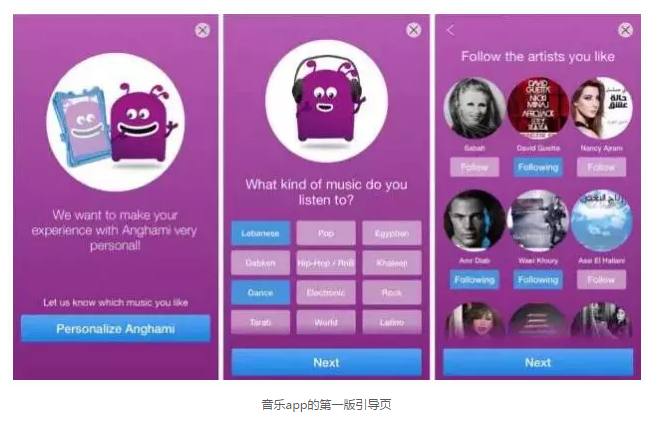
The app's first version of the guide page is organized by three parts, which are to guide users to customize their own music, select their favorite music types, select the corresponding type of musicians, and then customize the home content according to the user's choice (music) recommend.
Similar to this kind of user guide through the guide page to help users quickly find the content of their interest in the product, thus improving the user's usage and activity in the domestic app is also used in many, but everyone is so In the case of doing so, how high is the efficiency of your own guide page to improve the retention of new users?
In order to solve the above problem, the person in charge of the app conducted the following analysis: Amplitude (mobile data analysis tool) is embedded in each step of the music app guide page to extract data for analysis and verification. The idea of ​​his data analysis is to screen out all users who have completed three guide pages over a period of time, and then calculate the proportion of them who continue to return to the product after this time. At the same time, three guide pages will not be completed during this time. The users are filtered out and compare the retention rate of these users with the user retention rate of the completed guide page.
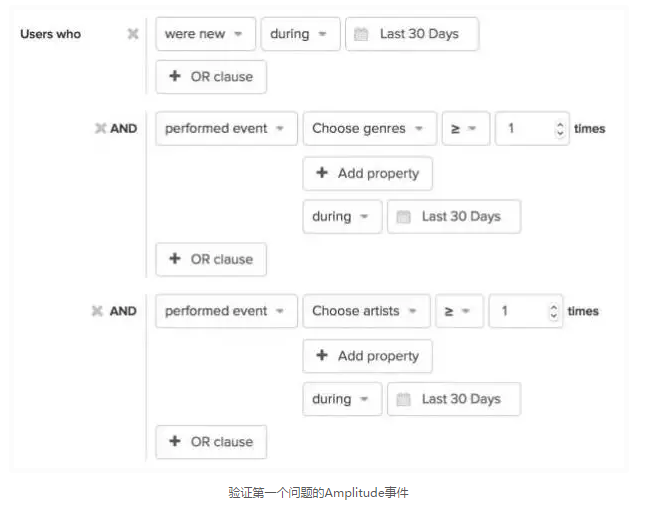
After data analysis, users who completed the three guide pages were 47% more likely to become long-term users (compared to those who did not finish) . Then the question arises. Now that the guide page has an effect on improving the user retention rate, how can we further increase the proportion of new users who complete the guide page to the total new users? (What causes everyone to be unwilling to complete the tasks in the guide page?) ?
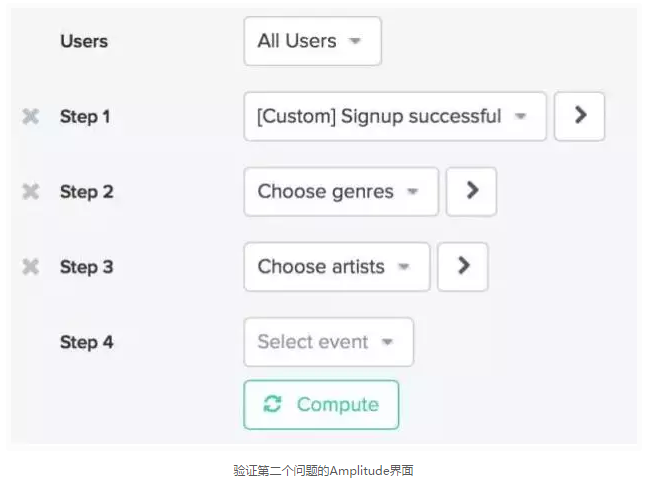
The person in charge of the app analyzed the funneling model of the new user clicks on the three guide pages and found that the churn rate from the second guide page to the third guide page reached 15% (as explained by the responsible person in the Middle East, the user Listen to songs more than recognize the type of music!) . In addition, although the wastage rate is not large from the first page to the second page, in order to further increase the proportion of users who have finished the guide page, the person in charge of the app believes that the first part of the guide page “Personalize Anghami†can be cancelled because this part of the information is more accurate. The user's recommended help is almost zero.
After the above two rounds of data analysis, this digital music stream app has only two parts of the guide page after the revision, and has also optimized the presentation elements.
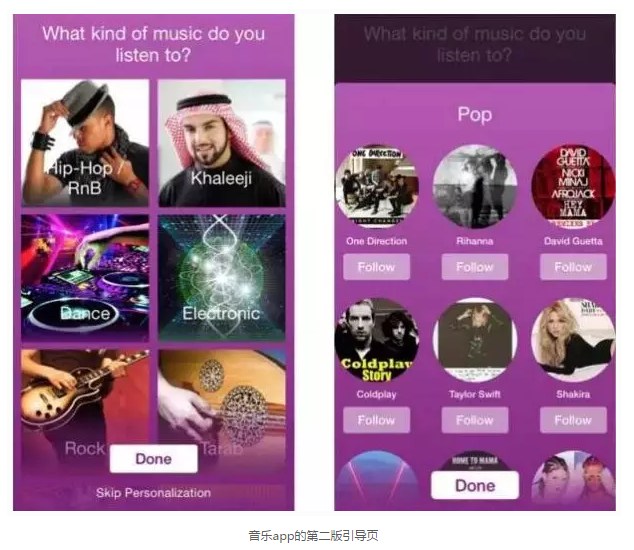
The cross-contrast analysis of user retention rates can be used in addition to the validity verification and function optimization analysis of the operational means. In fact, it can also be used when the product data is abnormal. Here is another example of how to find out the reasons for changes in product data during operations by comparing retention rates.
The recent increase in DAU (day active users) in a tool-based app was good, with DAU rising by 30,000 in one month, a significant increase from the previous quarter. The first step is to conduct a preliminary analysis of the data and find that the new users in the month are almost zero.
Then observe the new user's retention rate and found that the retention rate increased by about 3% this month. After communicating with the product classmates, they discovered that a new version was released at the beginning of the month. In order to check whether the retention rate for the new version update has increased, we further screened and checked the new version of the retention, and found that the new version's retention rate is more biased than the overall, and the new version has not changed much on the product, so the problem is likely to be Is the promotion of traffic.
Later, the analysis found that the newly added C channel accounted for 40% of this month's main push channel, but the retention rate was higher than the overall, so the final reason is that the new version has gained more and products in the C channel promotion. Target users.
In general, user retention data analysis helps operations run more scientific and quantifiable user operations management, while finding a new value standard for operational work: improving user retention rates!
For example, when you plan a content sharing event, you will only say that the number of shares is small when you don’t know the concept of user retention. How much new users are added through sharing, if you add the user retention rate as a measure of value for this sharing activity, You can add "the comparison between the retention rate of new users participating in sharing activities and the new users of non-participating activities, and the comparison between new users who entered the product through sharing links and new users who entered the product through normal channels.
Lei Fengnet Note: The author Chen Weixian, former employee of Baidu, Xiao Hongshu’s early community operations and promotion of workers. The WeChat public number “Product Caidian†shares the interesting and good goods of the Internet from the perspective of operations. This article is issued by everyone on the Lei Feng network authorized by the product manager, reproduced, please contact the authorize and retain the source and the author, not to delete the content.
